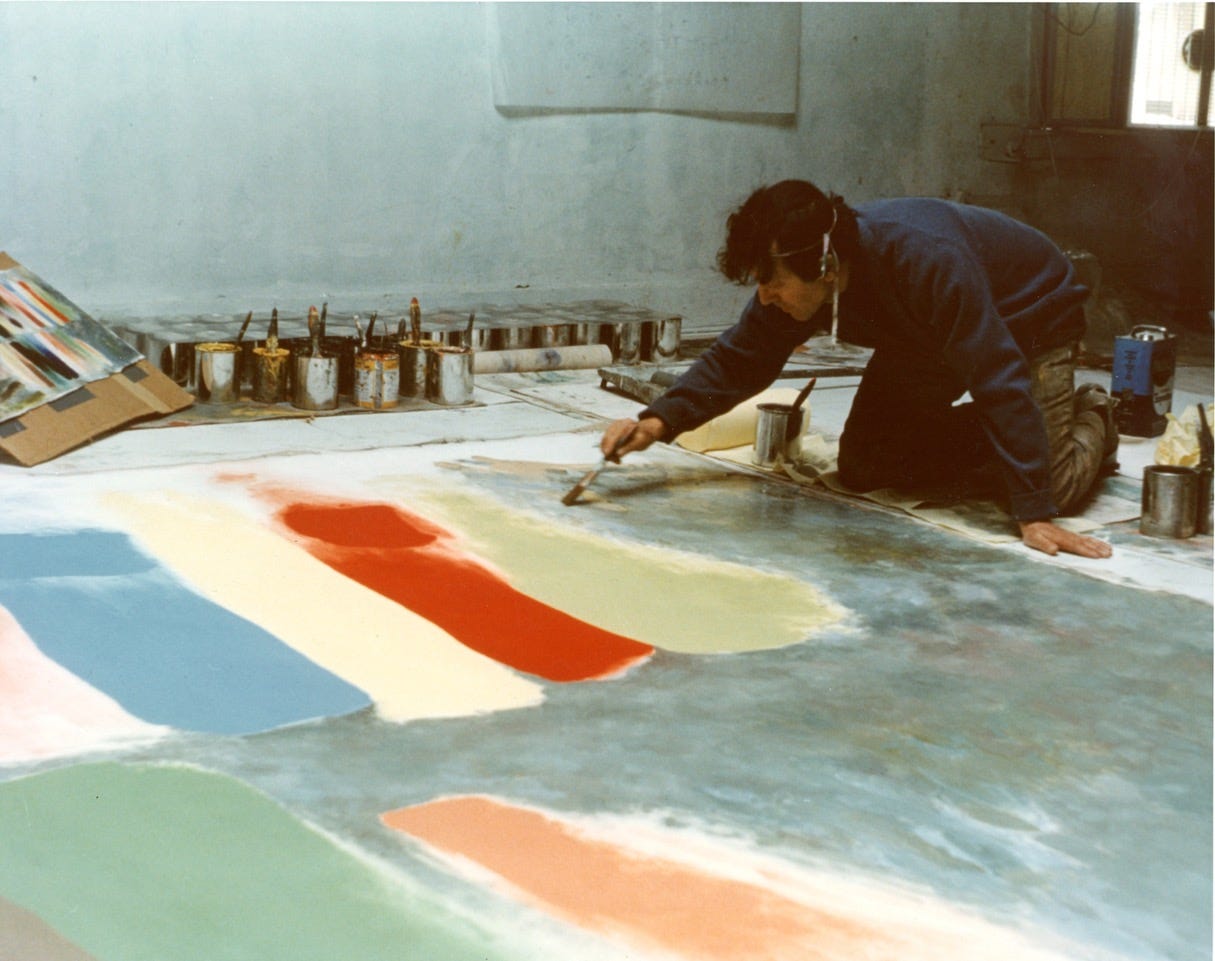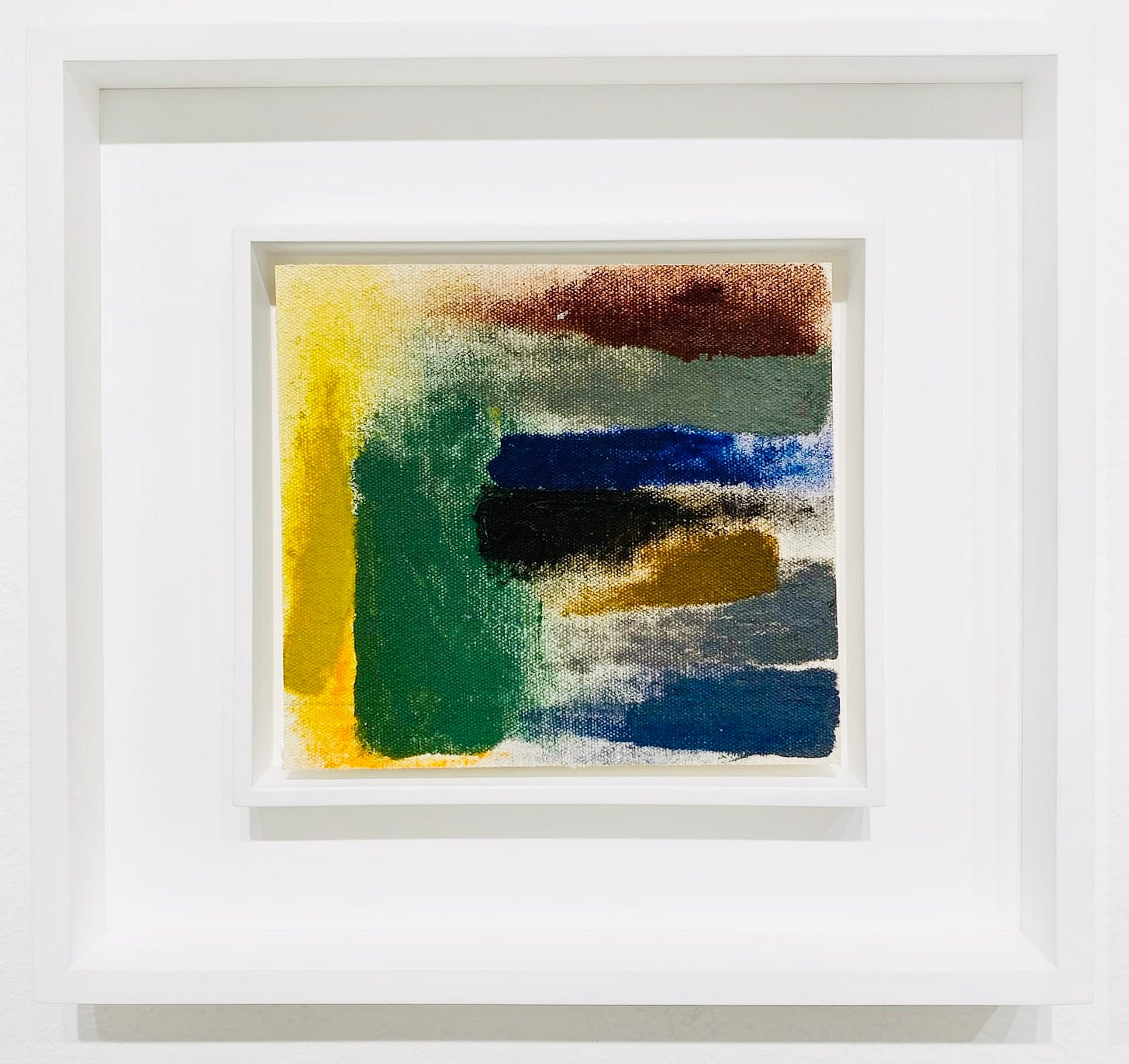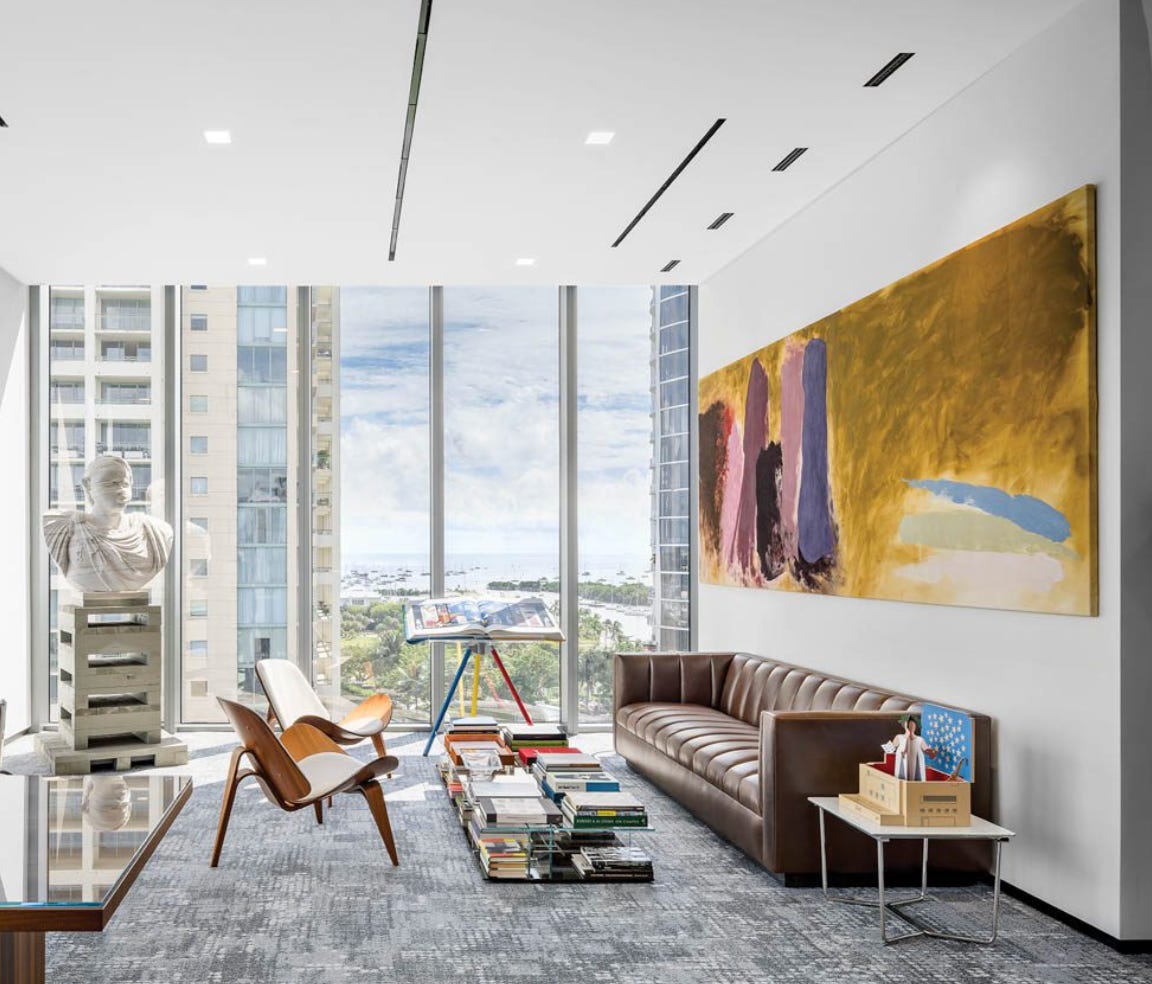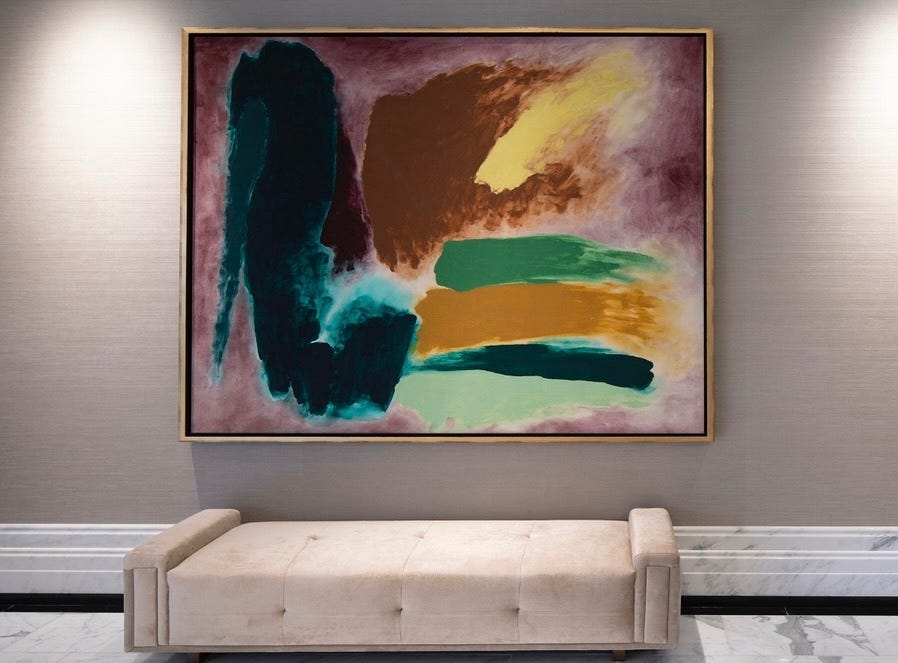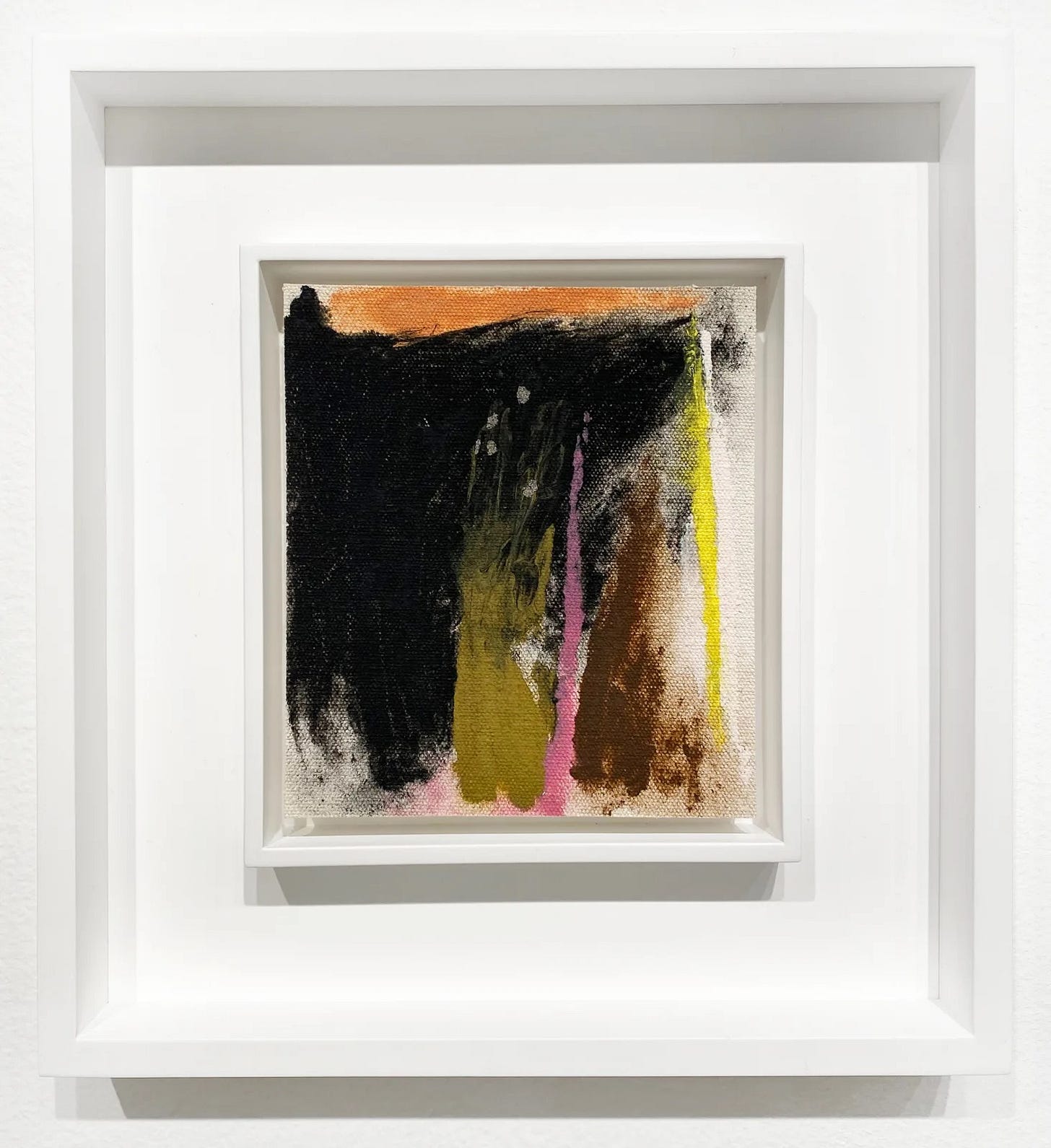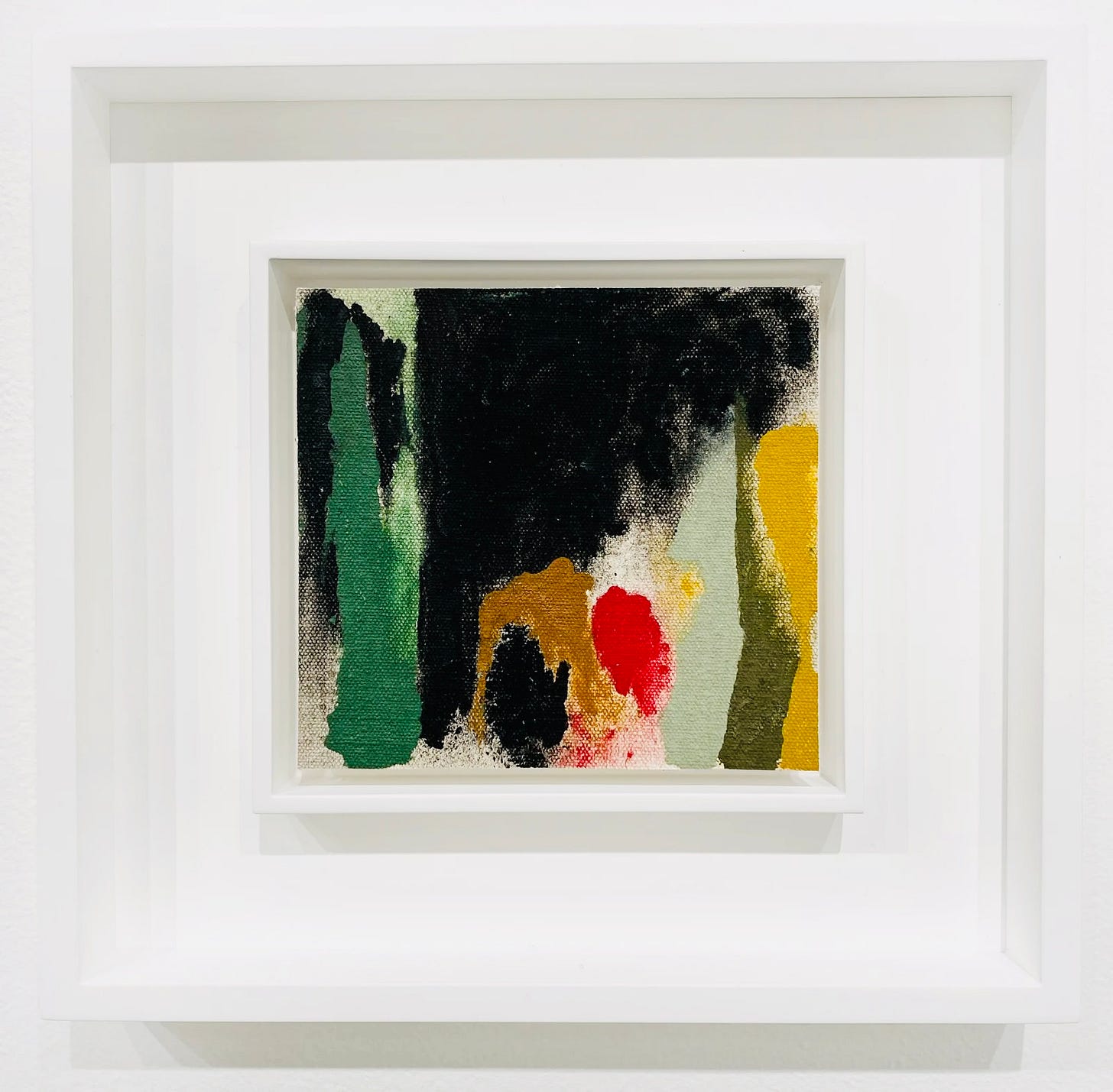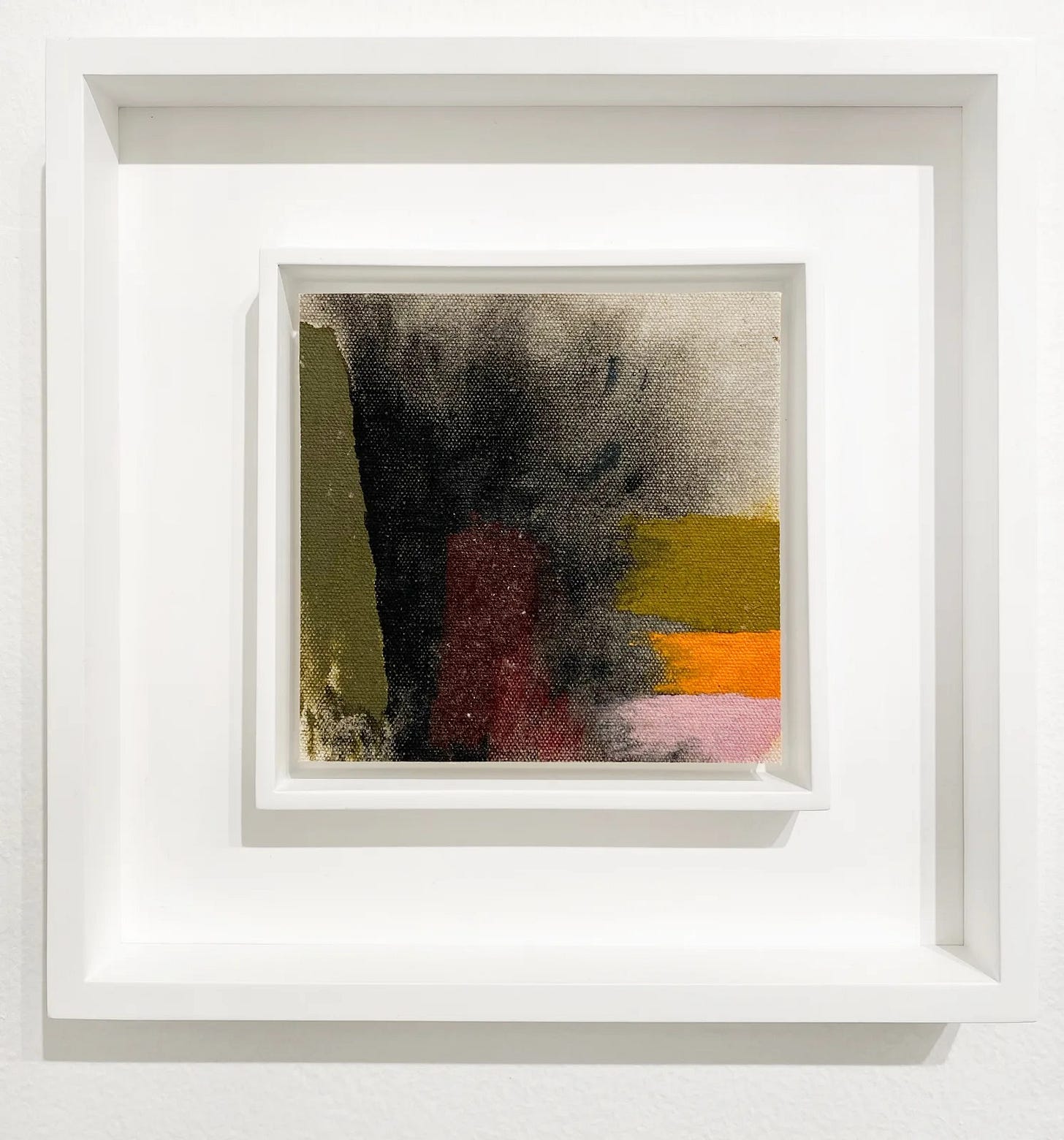Exceptional Works: Friedel Dzubas
A Master of Color Field Painting Worth Watching
Weekly writing about the art market and the convergence of art and technology. By day, I’m a partner at the Robert Fontaine Gallery and a data science consultant. By night, I write Artxiom, ideas at the intersection of art, technology, and finance.
If you haven’t subscribed, join today by subscribing here:
Exceptional Works: Friedel Dzubas
“I discovered that what I can reach emotionally and express by color is infinite.”
- Friedel Dzubas
Friedel Dzubas
Untitled, circa 1975
Acrylic on canvas
Signed and Dated
5.75 x 6.25 inches
Framed: 12 x 10 inches
“The opulence and expressiveness of his color places him among those contemporary artists for whom painting itself, the act of placing pigment on canvas, is an adventurous and revealing process that unites sensibility and vision. Dzubas’s large canvases offer us an entry into uncommon resonances, musical harmonies, and visual rhythms.”
- Abram Lerner cited in: EXH. CAT., Washington DC, Hirshhorn Museum, Friedel Dzubas, 1983, p.7
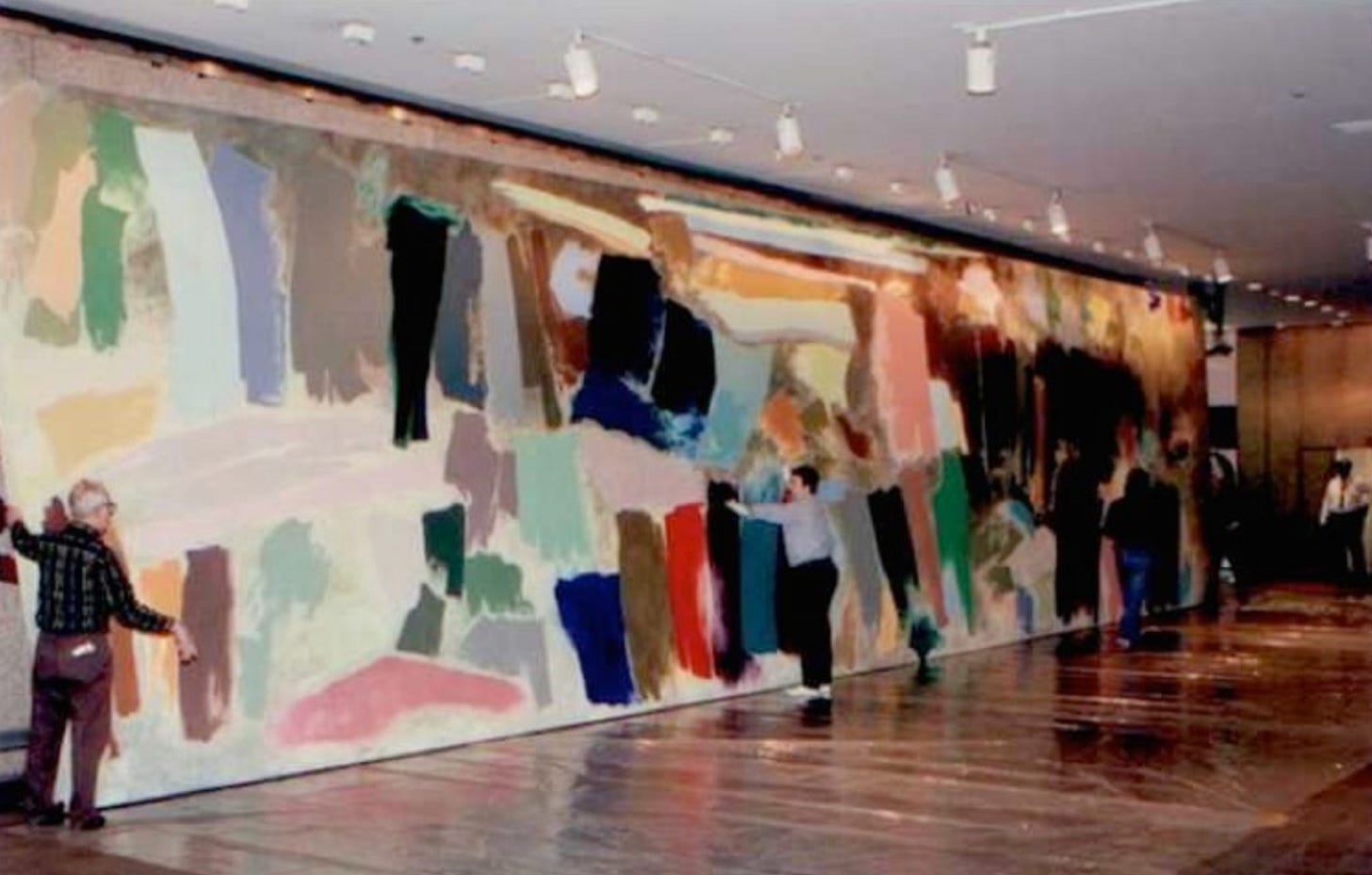
Friedel Dzubas (1915–1994) was a German-born American abstract painter who left an indelible mark on the Color Field and Abstract Expressionist movements. Fleeing Nazi Germany in 1939, the young artist arrived in New York carrying the sophisticated color sensibilities of European modernism into the epicenter of America's emerging Abstract Expressionism. The 1950s proved pivotal for Dzubas as he established himself in Manhattan's vibrant art scene. In 1951, art critic, Clement Greenberg, introduced Dzubas to Helen Frankenthaler, with whom he would share a studio the following year. This collaboration proved pivotal in both artist’s careers and in the evolution of post-Abstract Expressionism painting techniques. That same year, Dzubas participated in the legendary Ninth Street Show, the seminal exhibition that introduced Abstract Expressionism to the public. This participation marked his entry into the movement's inner circle, positioning him among the second generation of artists who would expand and refine the revolutionary painting practices pioneered by Pollock, de Kooning, and Rothko.
Dzubas occupies a unique position in post-war American art history. While his contributions to the development of Color Field painting are well documented, his work demonstrates a complexity that transcends simple categorization. His mastery of color relationships, combined with his innovative technical approaches, created paintings that were both visually stunning and conceptually sophisticated. His work represents a crucial bridge between the emotional intensity of Abstract Expressionism and the more systematic approaches that would characterize much of 1960s American abstract painting. Through his collaborative relationship with artists like Helen Frankenthaler and his own technical innovations, Dzubas helped establish new possibilities for how paint could interact with canvas, creating effects that were optically compelling and emotionally resonant. In summary, his work represents a refined evolution of Abstract Expressionist principles, showing how pure abstraction could achieve monumental presence and intimate poetry.
Unsurprisinly, the Dzubas market is poised for positive momentum at the moment. His works offer collectors access to museum-quality paintings by a historically significant artist at accessible price points, making his work attractive to emerging collectors and institutions building collections. This positioning becomes particularly attractive in the current market environment where overall art sales declined 12% in 2024 to $57.5 billion, prompting collectors to seek value in underappreciated masters with strong art historical foundations. His participation in landmark exhibitions, studio relationship with Helen Frankenthaler, and association with major Abstract Expressionist figures provide impeccable provenance and art historical context. The recent publication of the first comprehensive monograph on his work indicates growing academic attention, something that historically precedes broader market recognition. Also, the art world's ongoing reassessment of second-generation Abstract Expressionists benefits artists like Dzubas, whose contributions were overshadowed by first-generation stars but whose artistic achievements merit renewed attention.
In conclusion, for collectors seeking works that combine visual impact, historical importance, and growth potential, Dzubas offers one of the most compelling opportunities within the Abstract Expressionist canon. In an art market increasingly focused on recognizing previously overlooked voices, Friedel Dzubas represents aesthetic excellence and market opportunity. His luminous abstractions continue to resonate with contemporary viewers, while his historical significance provides the institutional validation that sustains long-term value.
Friedel Dzubas’ work has been exhibited in major exhibitions like the Hirshhorn Museum in DC, the Museum of Fine Arts in Houston, and Museum of Art in Fort Laudardele, being the 1983 retrospective at the Hirshhorn Museum the most significant in his career, establishing his reputation in the art world and cementing his place in art history.
Other Available Works by Friedel Dzubas:
Friedel Dzubas
Sketch for Canyon, 1975
Acrylic on canvas
Signed and Dated
5.75 x 5.25 inches
Framed: 12 x 10 inches
Friedel Dzubas
Sketch for Purple We, 1978
Acrylic on canvas
5.25 x 5.50 inches
Framed: 10 x 10 inches
Friedel Dzubas
Sketch for Dark After, 1975
Acrylic on canvas
5.25 x 5.75 inches
Framed: 10 x 10 inches
Friedel Dzubas
Sketch for Stigmata, 1973
Acrylic on canvas
5.25 x 5.25 inches
Framed: 10 x 10 inches
For more information about these works, inquire below:
Thanks for reading! Subscribe here to receive Artxiom in your inbox each week:



